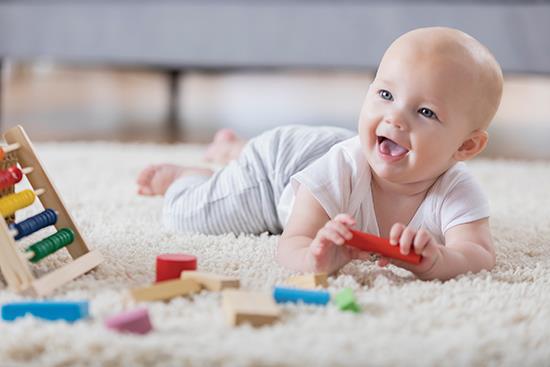Carpet’s Impact on Asthma & Allergies: New studies indicate that carpet may outperform hard surfaces in reducing airborne dust and allergens - April 2021
By Darius Helm
After years of efforts to dispel negative perceptions, the carpet industry has finally been given a victory after the National Institutes of Health’s National Heart, Lung and Blood Institute (NHLBI) recently announced it is rolling back previous recommendations that carpet should be replaced with hard surface flooring to protect those who suffer from asthma and allergies. In fact, according to the Carpet and Rug Institute (CRI), a raft of studies over the last several years show that carpet, properly maintained, is actually better than hard surface flooring in keeping dust and allergens out of the air.
Whether carpet has a positive or negative impact on asthma and allergy sufferers has been one of the most significant debates in the flooring industry over the last half century. It started in Sweden in the early 1970s with the determination by various associations and advocacy groups that carpet was hazardous to the health of those with asthma and allergies, though there were no medical studies to back it up. Nevertheless, it led to a wave of carpet deselection in Sweden and neighboring countries and to some extent throughout the world.
On the face of it, carpet’s performance as a particulate collector seemed to make sense. First of all, carpet per square foot has immeasurably more surface area for particulates to land on compared to hard surface flooring. Secondly, particulates can settle into carpet, protected from any air motion, while the slightest breeze will sweep them off a hard surface flooring. About this there is no debate. Carpets are, in fact, a sink for dust and allergens, and hard surface flooring is not. Case closed, right?
Apparently, the logic was so unassailable that no one felt the need to validate through the scientific process. In 2007, counter beliefs culminated here the U.S. in a NHLBI report which stated that symptoms “occur or worsen” in the presence of carpet. The report also called carpet a “precipitating and/or aggravating factor” and recommended replacing carpet with vinyl flooring. And remember, this was in 2007, before vinyl producers had moved en masse to replace the phthalates-a class of chemicals implicated in endocrine disruption-in their products with less hazardous chemistries, suggesting that perhaps NHLBI was drawing conclusions with an insufficient understanding of the issues involved.
UPDATED GUIDELINES
The new report, “2020 Focused Updates to the Asthma Management Guidelines,” published December 3, 2020, states that when it comes to certainty of evidence on allergen mitigation interventions, in terms of carpet removal, “[i]ntervention makes no difference,” reflecting low certainty of evidence.
This change in NHLBI guidance is partly the result of a concerted effort by CRI over the last eight years to revise its recommendations, including having industry experts testify to the National Institutes of Health’s expert panel and present studies that demonstrate how carpet can play a positive role in terms of indoor air quality.
According to Joe Yarbrough, president of CRI, in a properly maintained room, carpet will minimize particulates in the air, enhance indoor air quality and reduce impacts on asthma and allergy sufferers. Yarbrough says, “When properly maintained, [carpet] serves as a filter to actually hold [the particulates], so when properly vacuumed or otherwise cleaned on a recommended basis, then those things are removed in a way that doesn’t impact the asthma sufferer.”
Perhaps the best way to understand how an allergen sink is a positive and not a negative is to consider filtration systems. Take a look at the air filter in your car, vacuum cleaner or heating system. They all rely on air passing through membranes and materials-generally fiber-based or open-cell foam constructions-that present as much surface area as possible in order to capture small particles so that the air passing through is effectively cleaned. Over time, they fill with dust and allergens, so in order to function properly, they must be regularly cleaned or replaced.
In the case of hard surface flooring, dust settles on the surface but is not trapped like it is in carpet fibers, so air currents easily lift the dust off the floor and circulate it into the breathing zone before it again settles on the floor.
So the case being made by CRI is essentially that in two rooms identical in every way except that one is installed with carpet and the other with hard surface flooring, more dust and allergens will circulate in the air in the room with hard surface flooring. And over time, without additional particulates being added to the space, the carpet will steadily capture the dust and allergens and reduce their presence in the breathing zone in the room, while the room with hard surface flooring will not see any reduction at all.
However, this is all based on one essential condition, proper maintenance. For the carpet to behave like an air filter, it needs to be kept clean, and that means regular vacuuming-a HEPA filter system is the best way to capture all those particulates-and occasional deeper cleaning, like hot-water extraction, to ensure that anything trapped deep in the fibers is released.
According to Yarbrough, to get the word out, CRI is working through a range of media formats “to make sure the message of this change in recommendation is clearly distributed among the healthcare communities, particularly those that are specialists in the respiratory and asthma and allergy fields of treatment.”
Copyright 2021 Floor Focus
Related Topics:Carpet and Rug Institute
